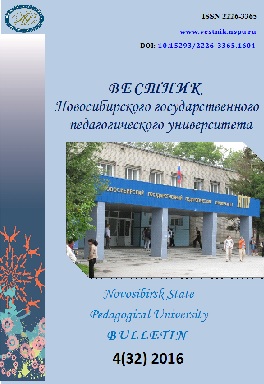Языковые лакуны в публицистическом тексте и способы их элиминирования в процессе перевода
Language lacunae in journalistic text and ways of eliminating them in translation
Author(s): Uliana Leonidovna Kshenovskaya, Alexandra Vasilievna StarodubsevaSubject(s): Foreign languages learning, Applied Linguistics, Translation Studies
Published by: Новосибирский государственный педагогический университет
Keywords: National cultural specificity; categorization; lacunarity; journalistic text; translation; lacunae; language gaps; lacunae elimination
Summary/Abstract: The paper aims to provide analysis of language lacunae and some methods of their elimination in communication and translation. The article observes the main ideas of modern schol-ars on the problem of language and cultural lacunarity. The article describes the concept and features of lacunae as specific markers of national cultural consciousness determining the over-all process of cognition and perception of reality, its categorization and nomination. Further on the author provides modern typologies of lacunae. Thus, as the authors states, the analysis of the existing language gaps allows not only to reveal the problematic zones emerging in commu-nication and translation, but also to reconstruct culturally conditioned worldview at its basic level in the structure of a linguistic personality. Hence, the intersection of cultural studies and translation studies is obvious. The article provides the analysis of the existing methods of lacu-nae elimination. The article reveals that, depending on the lacunae type, the nature of the text, the reader, the goals set by the authors or an interpreter, different elimination methods can be used, namely: filling or compensation. In conclusion the authors states that the elaborated means of lacunae elimination provide for greater or lesser reduction of lacunar tension. However, penetration into the national specif-ic of lacunar spheres of a linguoculture when applying either filling or compensation methods should be sufficiently deep due to extralinguistic and multidirectional nature of the phenomenon of lacunarity, which goes beyond mere linguistic or notional nonequivalence.
Journal: Вестник Новосибирского государственного педагогического университета
- Issue Year: 6/2016
- Issue No: 4
- Page Range: 154-166
- Page Count: 13
- Language: Russian

